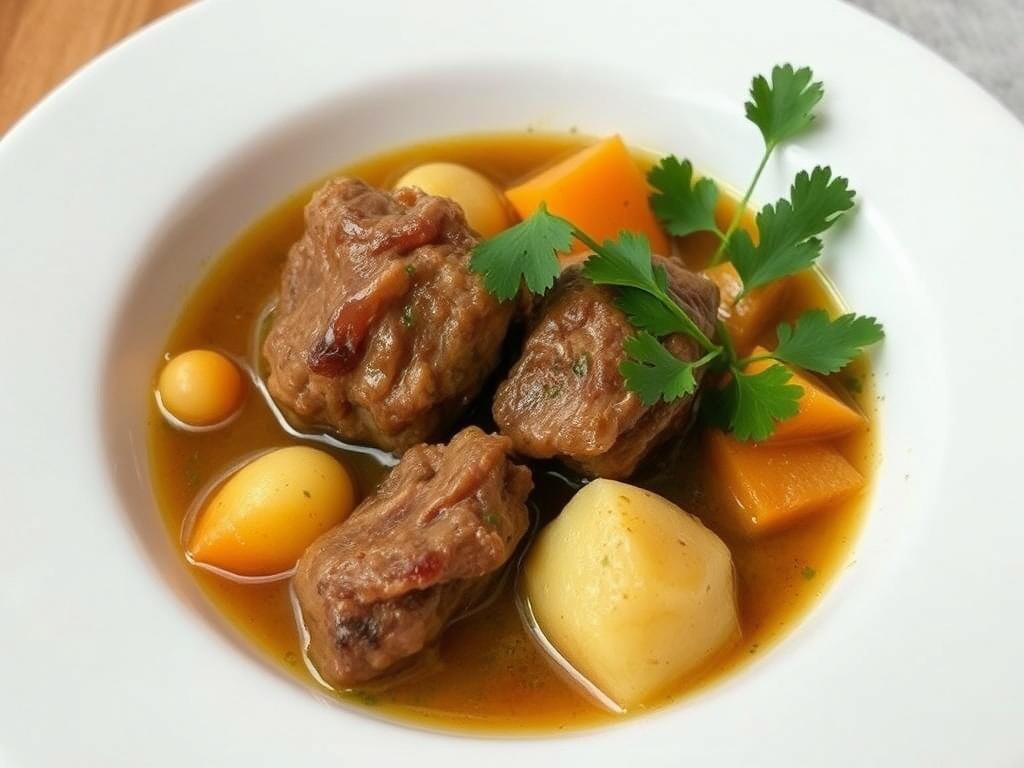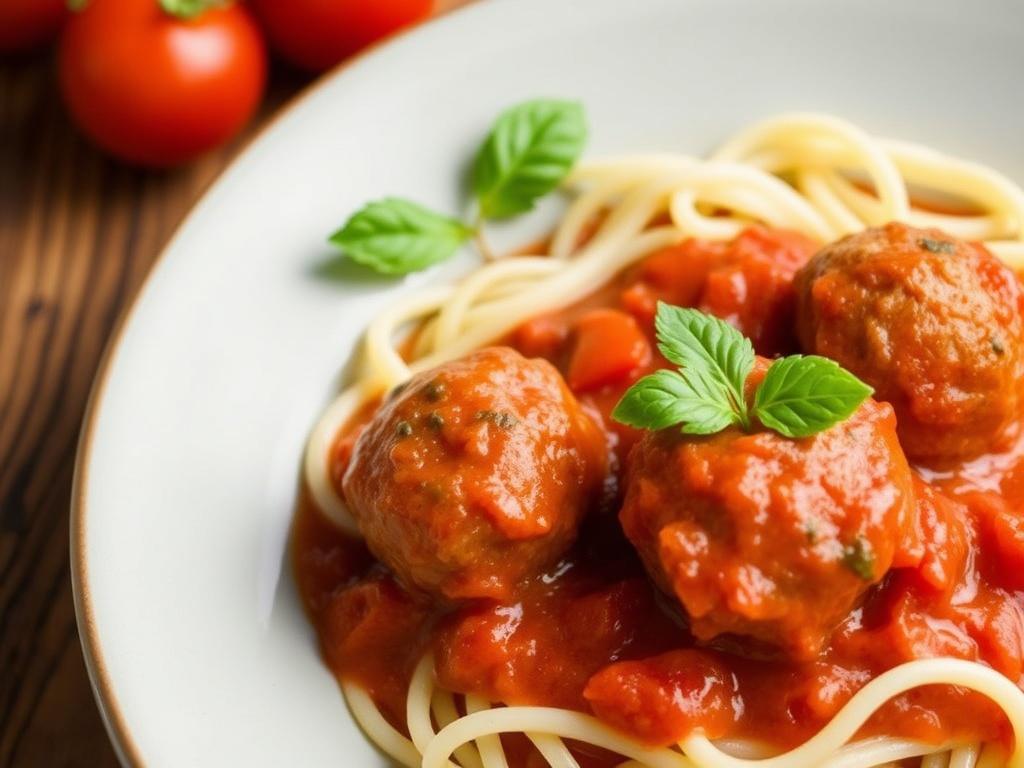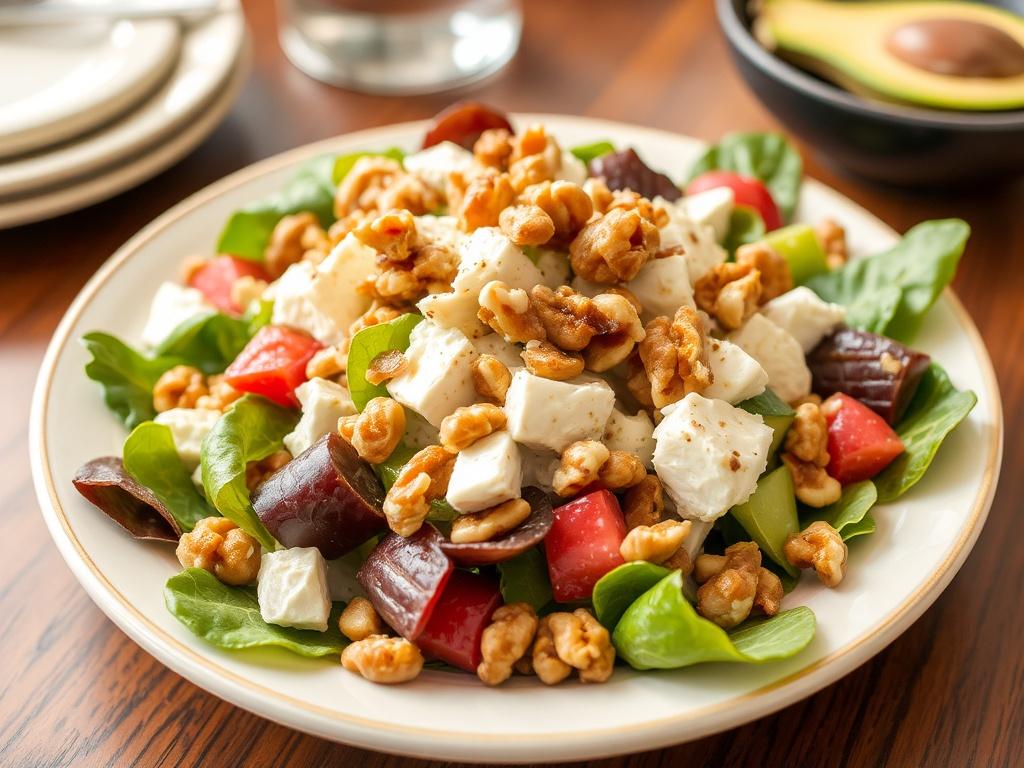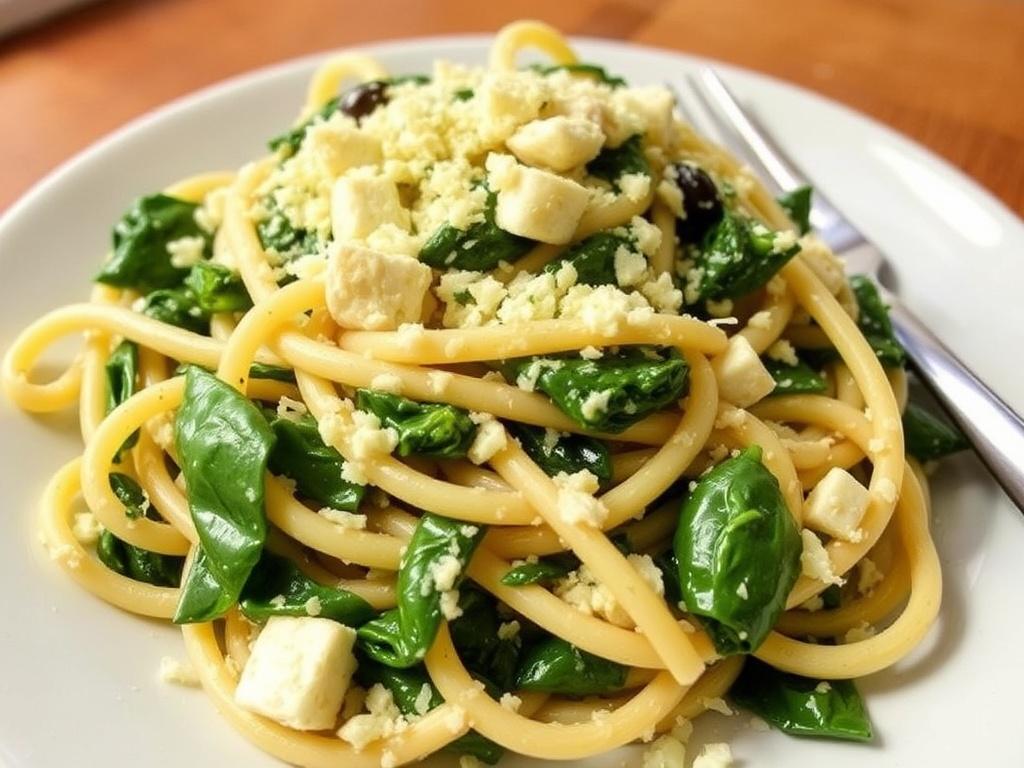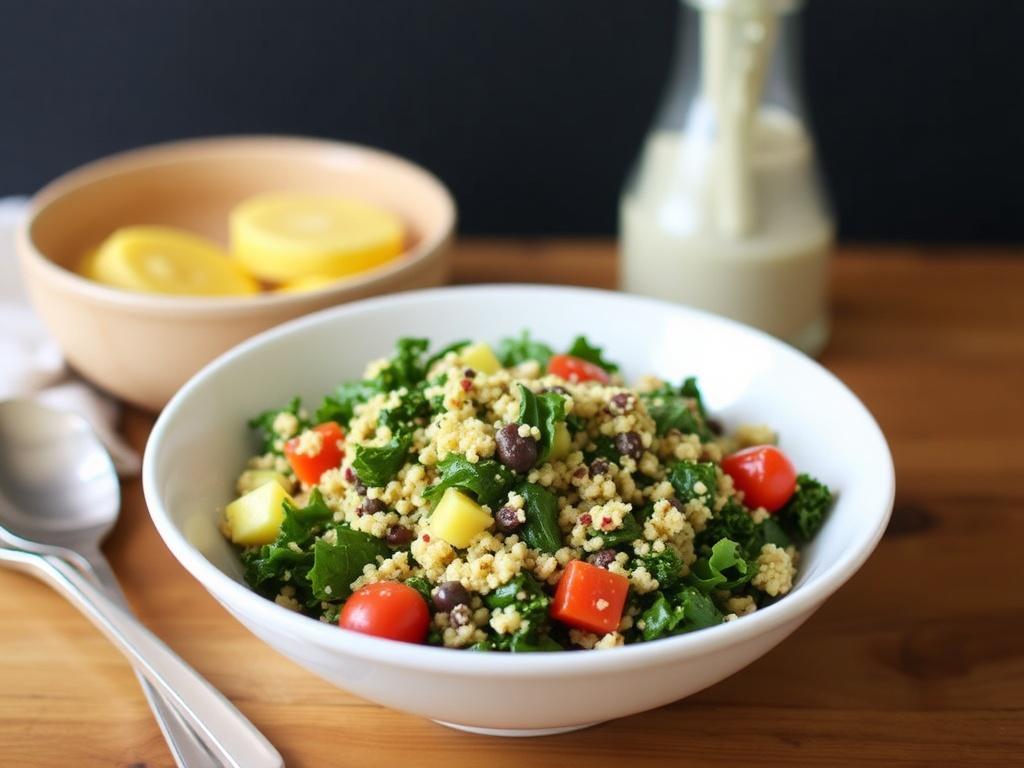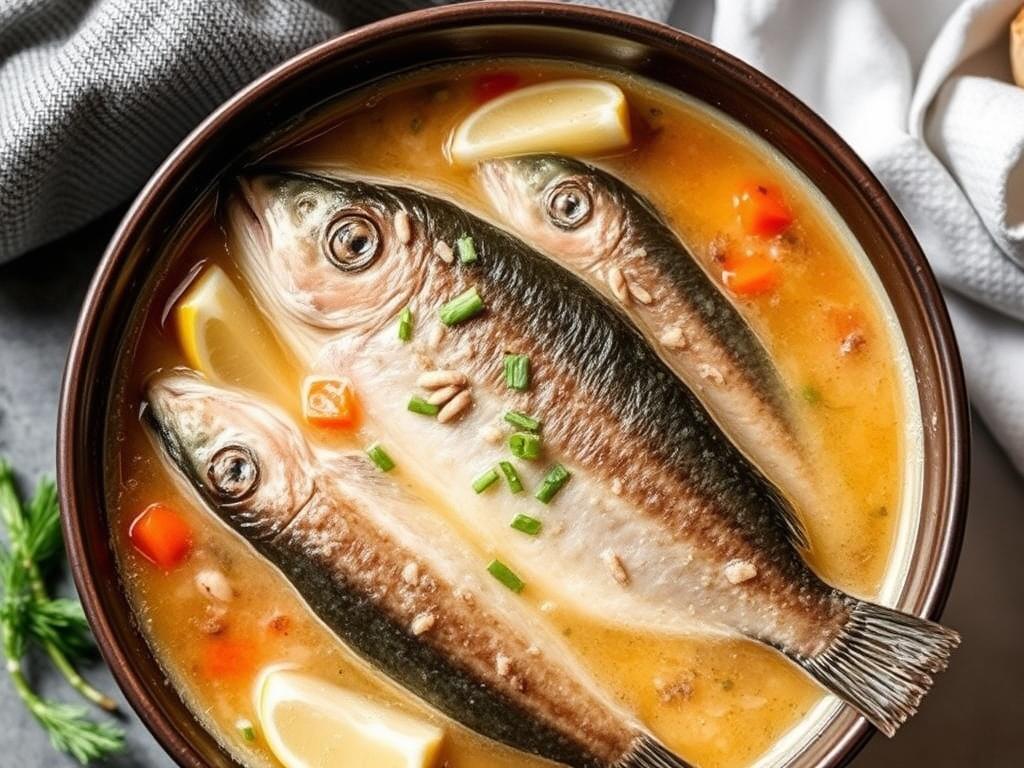Hearty Winter Chili: A Bowl That Warms Beyond the Soup Spoon
There are dishes that simply fill the stomach, and then there are meals that wrap around you like a worn wool blanket on a January evening. This Hearty Winter Chili belongs to the second kind. It’s thick, aromatic, and built to stand up to frosty sidewalks and late-night work shifts. In the pages that follow I’ll walk you through why this pot of food works so well in cold months, how to assemble layers of flavor, and ways to make it your own whether you prefer beef, beans, or a leaner protein. Expect practical technique, a few personal notes from my own winters in a drafty kitchen, and clear steps so you end up with a deeply flavored, reliably comforting bowl every time.
Why This Chili Feels Like Winter in a Bowl
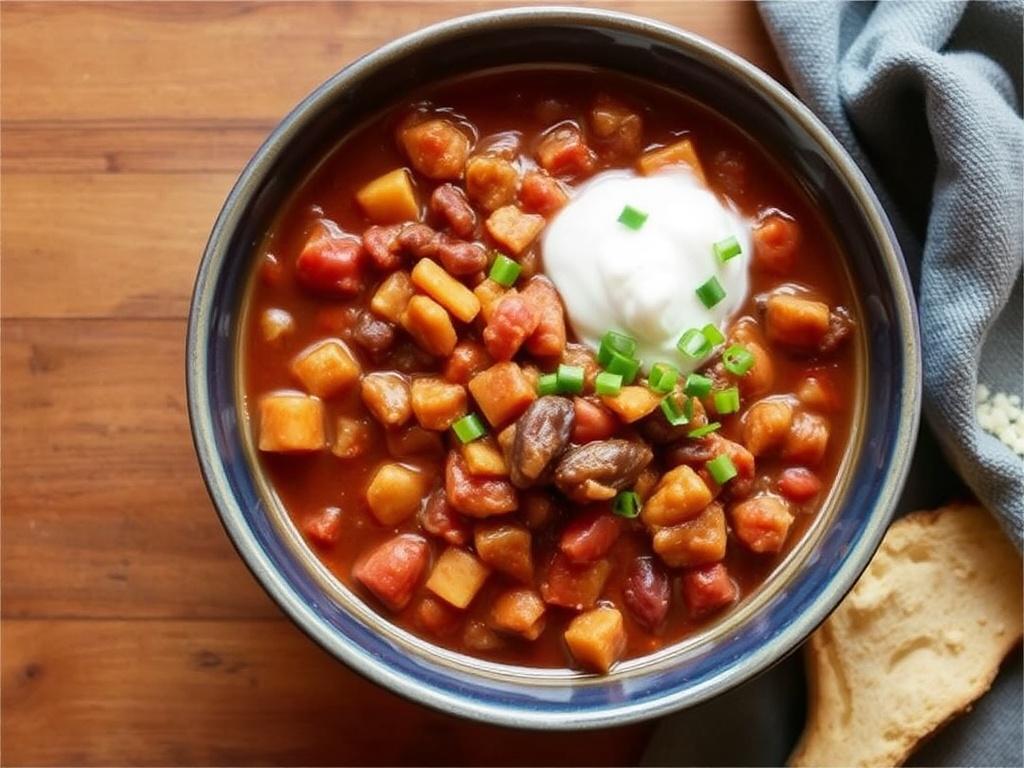
Winter cooking calls for weight and fragrance: something that carries heat, slow-cooked depth, and a hint of nostalgia. A good chili delivers on all three by concentrating savory and smoky notes while softening the beans and beef into melt-in-your-mouth textures. The dish’s body comes from the interaction of long-simmered tomatoes, gelatinized meat juices, and softened legumes; together they make a thick, spoonable stew rather than a thin soup. Aromatics—onions, garlic, toasted spices—release volatiles that feel indulgent on cold evenings, and the final hit of acid or chocolate balances sweetness from carrots or caramelized onions. In short, this chili fills both the appetite and the senses, which is exactly what winter calls for.
Core Ingredients and Why Each Matters
Every ingredient in this recipe has a role beyond flavor: it contributes texture, mouthfeel, or structure. Coarsely ground beef gives body and a savory backbone; beans add creaminess and bite; tomatoes supply acidity and body; spices create warmth, and aromatics set the first impression. Choose a chuck roast for grinding or a 80/20 mince if you want richer mouthfeel; leaner cuts need extra fat or olive oil to avoid dried-out meat. For beans, I prefer a mix—pinto for creaminess, kidney for shape—because the contrast keeps each spoonful interesting. Good canned tomatoes are worth the small splurge: their concentrated acidity and sweetness carry the whole pot.
Shopping List: Essentials and Nice-to-Haves
Keep your pantry stocked with a handful of reliable items so you can pull this chili together on short notice. Essential: dried or canned beans, ground beef, canned tomatoes, onion, garlic, beef stock, chili powder, cumin, and salt. Nice-to-have: smoked paprika, dark chocolate (70% cocoa), a shot of espresso or strong coffee, cornstarch for thickening, and pickled jalapeños for bright heat. Fresh cilantro and lime make excellent finishing touches, but a good shredded cheddar and sour cream will please more people at the table. Buy spices in small quantities; freshness matters more than a branded label.
The Step-by-Step Recipe (Practical, Not Fussy)
Start with mise en place: chop the onions, mince the garlic, measure spices, and open cans. Heat a heavy-bottomed pot over medium-high heat and add a tablespoon of oil. Brown the beef in batches so it sears instead of stews; this creates Maillard flavors that no spice can replace. Remove the browned meat, sweat the onions until soft, and add garlic and spices to toast them briefly; this bloom brings sharper, more complex flavor from the powdered spices. Return the beef to the pot, add tomatoes, stock, and beans, then simmer gently until everything comes together and the flavors meld into a cohesive whole.
Browning Meat: The One Trick That Changes Everything
Do not crowd the pan when you brown beef. Crowding lowers surface temperature and causes steaming, which prevents the savory crust you want. Work in small batches, spreading meat into a single layer and letting it sit until a deep, dark crust forms before stirring. Use a wooden spoon to scrape the brown bits from the bottom of the pot and deglaze with a splash of stock, beer, or coffee; those browned bits are condensed flavor in microfilm. If fat accumulates, you can tilt the pan and spoon some off, but keep enough to carry the aromatics and spices. That crisp, roasted flavor is the backbone of any memorable chili.
Choosing and Preparing Beans
Dried beans require planning but reward you with superior texture and flavor. Soak overnight for even cooking and reduce gas-producing oligosaccharides, then simmer gently until tender but not falling apart. Canned beans are an excellent shortcut—rinse them to remove excess sodium and canning liquid; they’ll hold better in the pot and absorb the chili’s juices. If you combine dried and canned, add the canned beans later so they don’t disintegrate into the broth. For creamier results, mash a portion of the cooked beans against the pot wall and stir them back in; this thickens without relying on thickeners.
Layering Flavor: Spices, Heat, and Depth
Building flavor in chili is cumulative. Start with aromatic vegetables, follow with toasted spices, and finish with components that tweak acid, salt, and umami. Chili powder and cumin are the core; smoked paprika adds warmth, and a pinch of cinnamon or a square of dark chocolate can anchor the sweetness. A small shot of strong coffee or brewed espresso deepens roastiness without making the bowl taste like a café. Salt goes in stages—some while cooking, then adjust at the end—because reductions will concentrate brine. Taste often but sparingly; you want to learn how each ingredient shifts the profile.
Controlling Heat: How to Make Chili Mild or Spicy
Heat management is about layers rather than a single choice. Use mild ancho powder for background warmth, add jalapeños or serranos for fresh heat, and reserve a concentrated chili paste or cayenne to dial up intensity near serving. If the pot becomes too piquant, dairy like sour cream or plain yogurt will soothe the mouth, while a squeeze of lime brightens and balances. Seeds and membranes contain the most capsaicin; remove them if you want less burn. Remember, heat mellows with time, so a chili that bites on day one may feel more balanced after a rest in the fridge.
Variations to Suit Different Diets and Moods
One of the strengths of this recipe is its adaptability. Swap beef for turkey or shredded chicken for a lighter profile that still carries spices well. For a vegetarian route, use mushrooms and lentils with extra umami from miso or soy to mimic meatiness. Try a white chili with chicken, white beans, and green chiles when you crave brightness instead of deep red richness. Another variation uses chunks of short rib for an extravagantly tender stew; the long braise dissolves collagen into silky goodness. Each change shifts texture and taste but preserves the comfort at the dish’s core.
My Winter Experiment: A Crowd-Pleasing Twist
One January I hosted a neighborhood soup swap during a snowstorm and made a pot of chili using half ground beef and half shredded brisket saved from a weekend barbecue. The brisket brought a smoky echo and soft ribbons of fat that dissolved into the broth, while the fresh beef supplied the essential meat granules. I added a single square of dark chocolate and a splash of strong coffee at the end; people asked for the recipe and came back for seconds. That night taught me that combining textures and cooking techniques—grilling then simmering—creates a bowl that feels both rustic and composed.
Serving and Toppings: Small Things That Elevate
Toppings change the conversation at the table. Basic options—shredded cheddar, chopped green onions, a dollop of sour cream—soften heat and add contrast. Toasted pepitas or crushed tortilla chips introduce crunch against the chili’s dense body, and pickled red onions supply a bright, acidic note that cuts richness. Serve with cornbread, rice, or a hearty rye to sop up juices. For a more composed meal, offer avocado slices and a crisp green salad so the palate alternates between richness and freshness.
Pairings: Drinks and Side Dishes
Pairing chili can be as simple as matching weight and contrast. A malty amber ale or a porter complements the roasted flavors of beef and smoked spice. If you prefer wine, look for fruity reds with soft tannins, such as Zinfandel or a ripe Tempranillo. Non-alcoholic options include a tart kombucha or a cold ginger beer which cuts fat and refreshes the palate. Side dishes should offer textural contrast: a crisp slaw, creamy polenta, or buttered corn all work well. Think of the bowl as the anchor and sides as punctuation marks that keep each bite lively.
Make-Ahead, Cooling, and Freezing: Practicalities for Busy Cooks
Chili is forgiving and benefits from time: flavors integrate and heat mellows after a day. Cool it quickly by transferring to shallow containers and refrigerate within two hours. Reheat gently on the stovetop with a splash of water or stock to loosen the sauce. For freezing, portion into airtight containers so you can thaw only what you need; chili freezes and reheats very well because its structure is stable. Here’s a compact reference for storage times so you don’t waste effort or food:
| Storage Method | Time at Recommended Temperature | Notes |
|---|---|---|
| Refrigerator (≤4°C) | 3–4 days | Keep in shallow containers; reheat thoroughly to 74°C |
| Freezer (≤-18°C) | 3 months | Label with date; thaw in fridge overnight |
| Vacuum-sealed | 6–9 months | Best quality retained; freeze flat for space saving |
Scaling Up for a Crowd Without Losing Quality
To feed a group, multiply ingredients proportionally but keep an eye on pot size and simmer time. Larger volumes need longer simmering to meld, and evaporation will be slower, so adjust final thickness by reducing uncovered or stirring in a mashed bean slurry. If cooking in a single large vessel, maintain even heat by stirring more frequently and keeping the simmer gentle to avoid scorching. Alternatively, divide the work across two pots and combine near the end for consistent texture. And if you plan to serve from chafing dishes or slow cookers, keep the temperature safe and stir occasionally to maintain an even consistency.
Presentation Tips for Casual or Formal Serving
For casual gatherings set out a toppings bar with bowls of grated cheese, chopped cilantro, sliced jalapeños, lime wedges, and crushed chips. For a polished dinner, ladle portions into warmed bowls, place a quenelle of sour cream in the center, sprinkle microgreens, and finish with a drizzle of chili oil. Warm plates keep chili from cooling too fast and encourage guests to savor each spoonful. Small ramekins of cornbread or sourdough rounds make the presentation homey without feeling rustic to the point of sloppiness. Serving style shapes the mood as much as the recipe itself.
Nutrition and Sensible Swaps
Chili can be hearty without being heavy if you make intentional swaps. Use leaner beef, or substitute ground turkey to cut saturated fat; lean meats still develop plenty of flavor when seared properly. Increase the ratio of beans to meat to add fiber and plant protein; beans also help with satiety and cost-effectiveness. Reduce sodium by choosing no-salt-added canned tomatoes and rinsed beans, then season at the end for control. For extra vegetables, add diced carrots, bell peppers, or sweet potato; they add natural sweetness and nutritional balance. These tweaks keep the dish comforting while aligning with healthier eating patterns.
Allergens and Accommodations
Chili is adaptable to common dietary restrictions. For gluten-free cooking, use gluten-free stock and check spice blends for hidden wheat. Dairy can be omitted or replaced with coconut yogurt if needed; toppings can include dairy-free cheeses. For low-FODMAP diets, reduce onion and garlic and use infused oils to capture flavor without the oligosaccharides. Label dishes clearly when serving a crowd and keep potential allergens like nuts or dairy separate from communal bowls. Thoughtful accommodations mean more people enjoy the meal comfortably.
Final Thoughts on Building Your Signature Pot
Making an exceptional winter chili is a practice in layering, patience, and small adjustments. Start simple, then make notes about what you liked and what you’d change: more heat, less acid, extra smoke. Over time you’ll develop a personal template—maybe you’ll always include coffee, or never skip a bay leaf—and that template becomes your signature. I recommend cooking a few times with the same basic method but different proteins or beans to see what combinations speak to you. The best chili is the one you keep returning to, tweaking in small ways until it feels inevitable.
A Parting Note from My Kitchen
On a particularly icy evening I once delivered a pot of chili to an elderly neighbor who couldn’t leave the house. The bowl wasn’t fancy, but the warmth and simple, steady flavors made her eyes brighten in a way I didn’t expect. That memory is why I return to this recipe each winter: it’s food that does more than satisfy hunger. It creates comfort, offers a practical solution for feeding many with minimal fuss, and carries a kind of quiet generosity. Keep this recipe in your rotation; it will serve you well on nights when you need something both honest and comforting.

